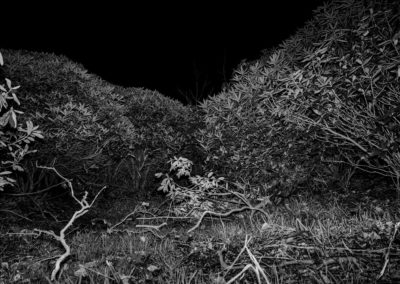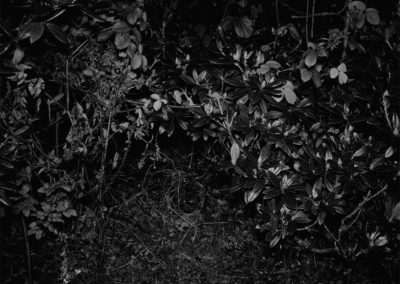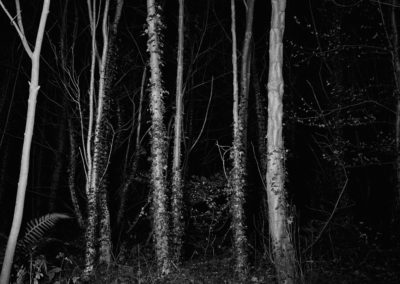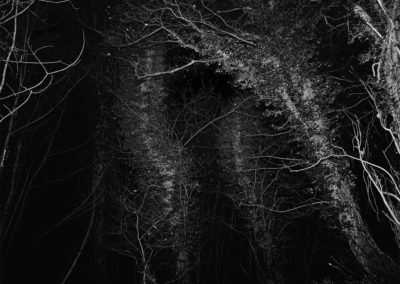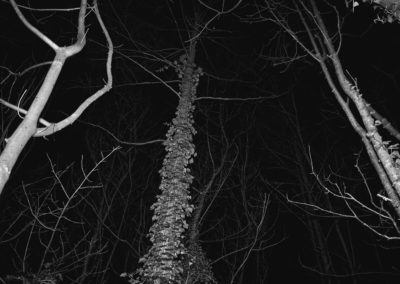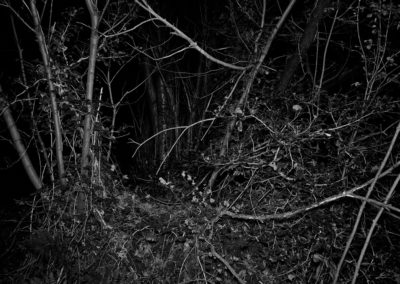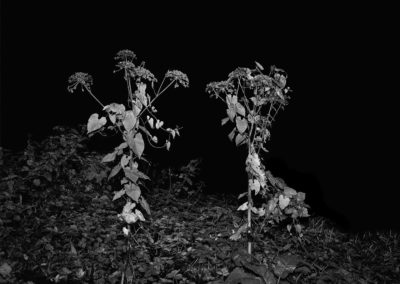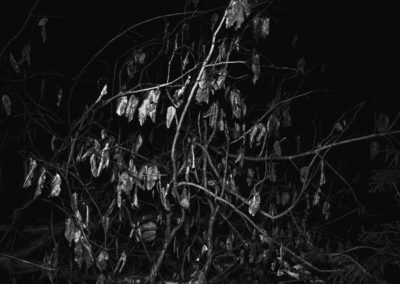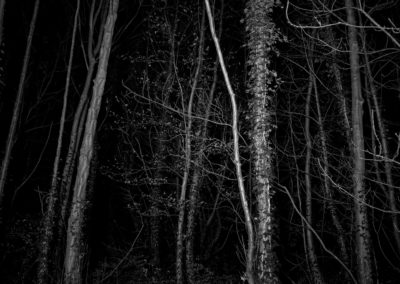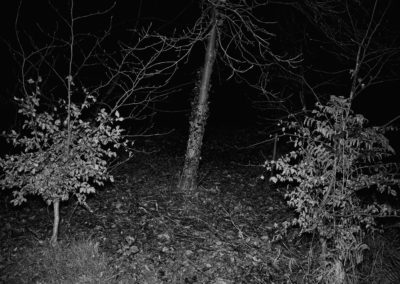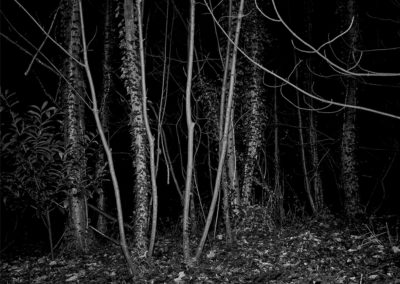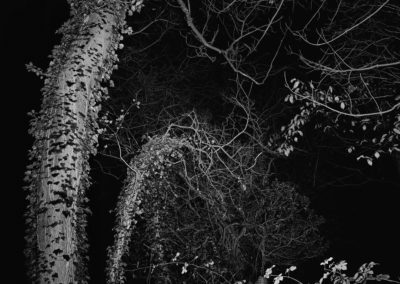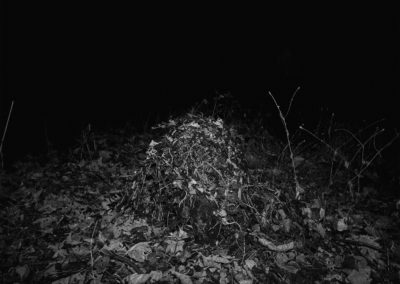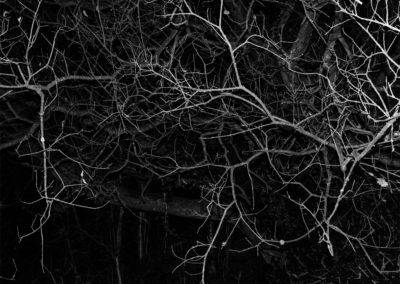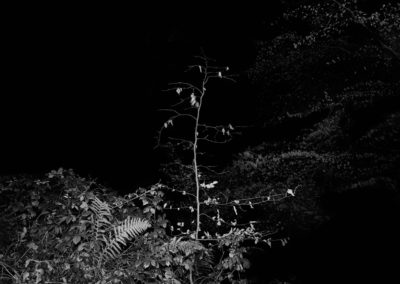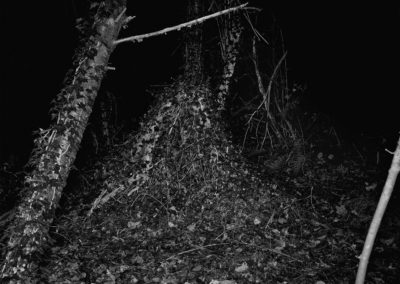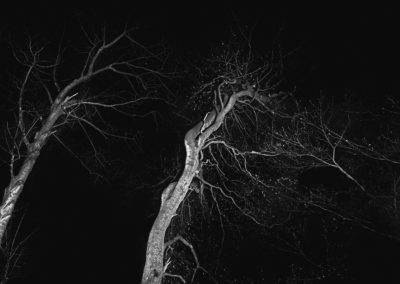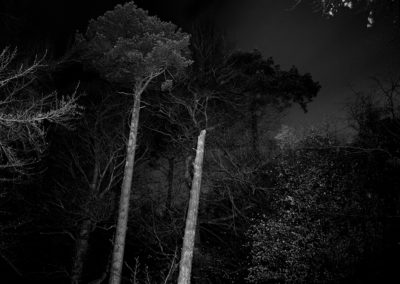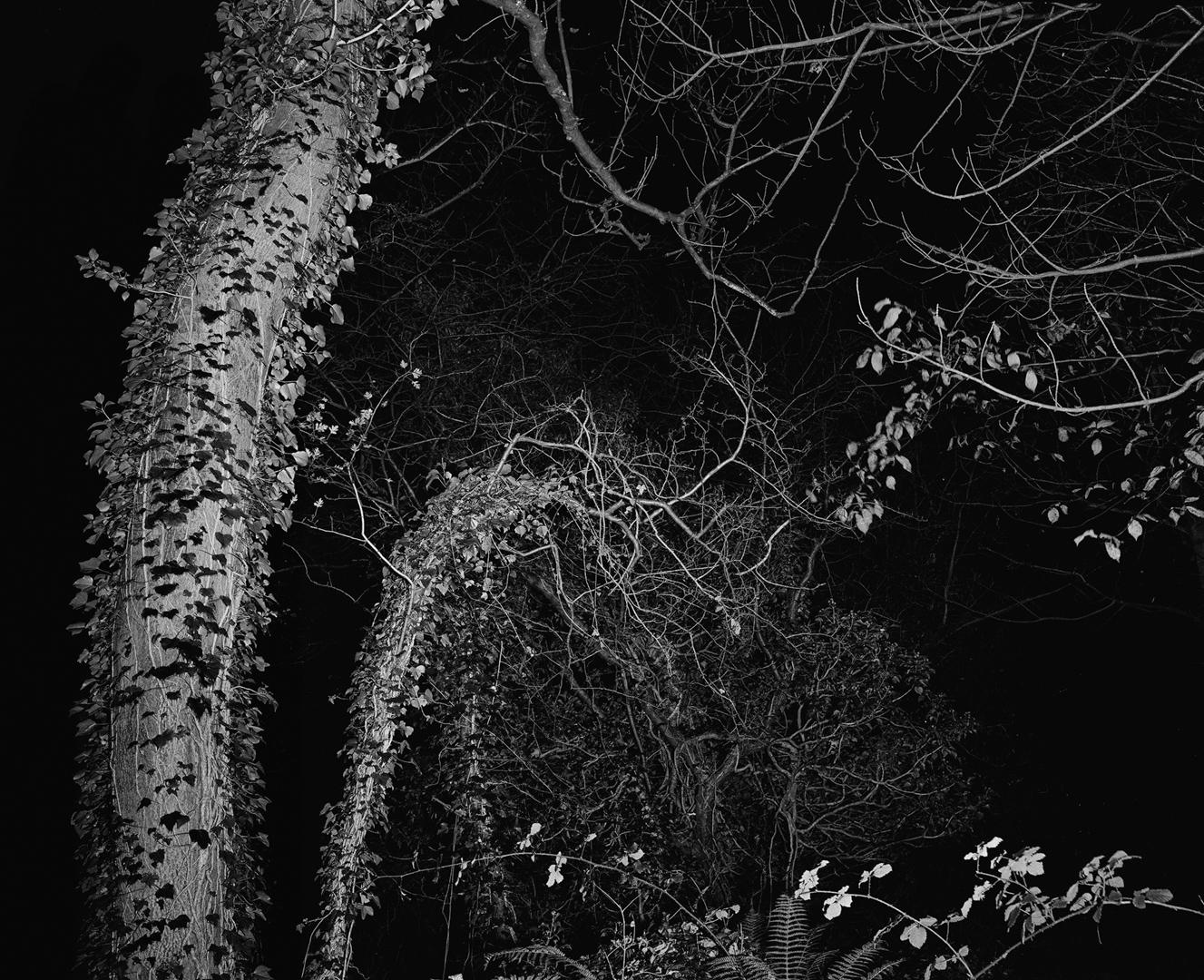
In the winter nights of October 2012, I began creating a series of work during a time of substantial changes in my life. At first, the idea was a response to attending a lecture where I witnessed a presentation of photographic work played alongside musical sound. Fascinated by how it made me feel. I purchased the same work in book format. Surprisingly the work did not enthuse me in the same way. However, it did amplify my curiosity in relation to how the music could have affected my reaction. This led to a series of work photographically investigating ideas behind musical stimuli and ultimately about the intrinsic feelings stimulated by an effective musical response.
Listening to music repeatedly played on a loop through headphones I would wonder in the darkness of the forest searching in the vastness of the landscape for imagery that was thoughtfully considered with the music in mind. Although the woodland was a distraction from the realities of life; as it was a place with little interruptions. It began to make me feel separate. I started to become occupied by apprehension as I was conscious of the darkness that was surrounding me physically and mentally. I didn’t feel a connection to the landscape or the imagery I was creating as my mind was isolated in thought; I was merely firing flashes of light into the darkness hoping to capture something. As a result, the images I produced became nothing more and nothing less than misguided happenings.
Ironically the initial idea of using music as a tool to enhance stimuli happened to me unwillingly. Consequently, my relationship to the music quickly changed as my father later passed away in December. I remember waiting outside the family room in the hospital. Sitting on a chair that I had become accustomed to. My dad came out of the family room and walked straight to the hospital corridor. The feeling was unpleasant. Terminal cancer. Hope drained from me in that moment. It was a night where I wished I was lost in the wilderness.
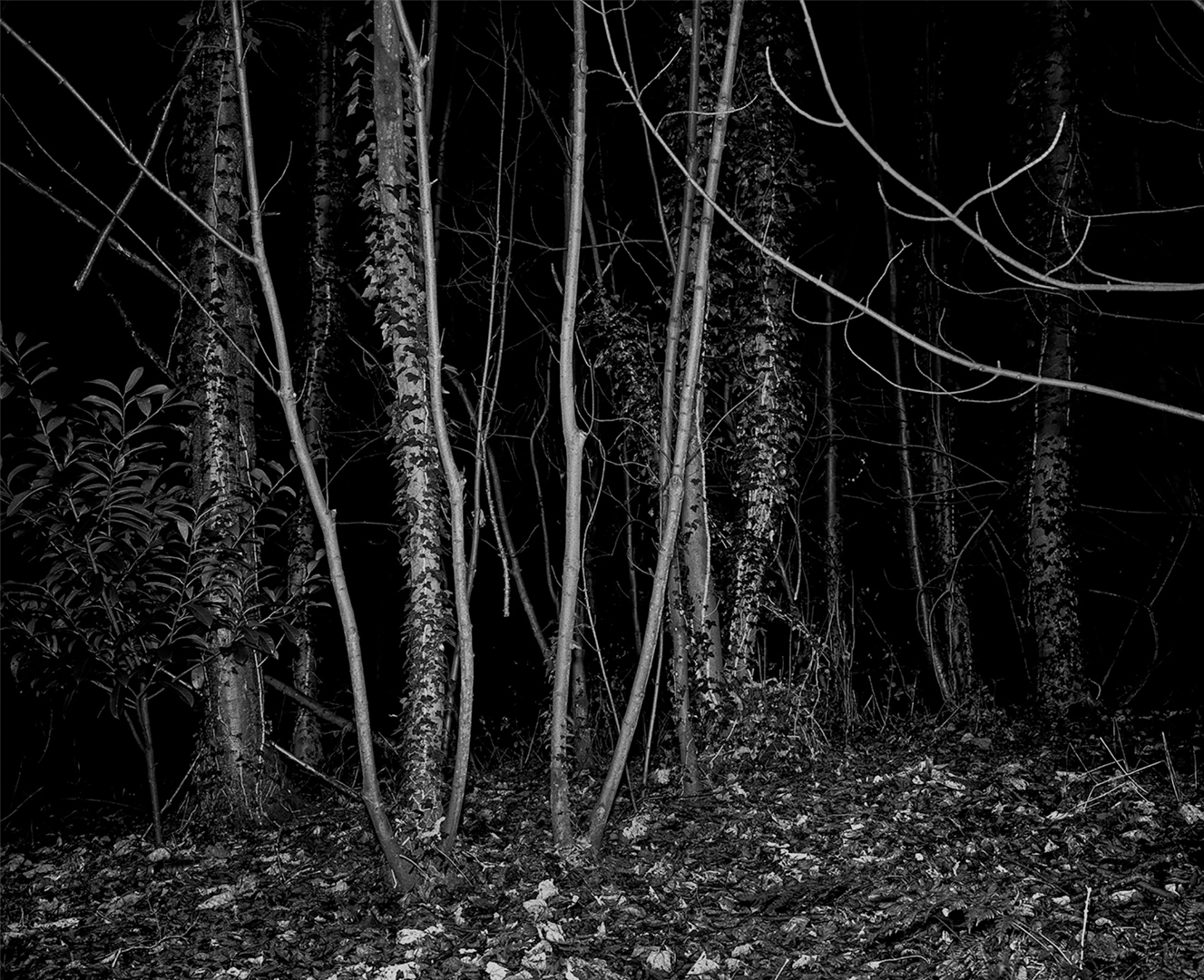
Absent from the forest for a year; my observations of the work started to become challenged by the weight of memories. The music had now become a catalyst for memories and evaluation. The music harbored emotions that transcended my initial experience. Disappointed with the original imagery I returned to the familiarity of the forest again but with different expectations. It was necessary for me to re-interpret the landscape and produce imagery intuitively. It was about exploring with purpose. With closure in mind, I focused on my attachment to the landscape by drawing upon my own awareness of the associated sensory memories and the personal significance the music had now come to hold.
My Dad would have always questioned why I wasn’t at university studying. We would have laughed at this because he never quite believed my answer that I was either off or had only one class that day. It is because of his willingness to push me to achieve under the circumstances that the work became so important to me. Knowing that my dad would not see me graduate I felt that in some strange way that closure of this work would be a shared accomplishment that would have made him proud.
One night as I was leaving the hospital my Dad winked at me with a smile. This always embedded deep into my mind. There was an acceptance in his wink. For me, in that moment he was saying you’re going to be ok.
Selected images from Lee’s Grey Matter series are shown below
Video: Grey Matter by Lee Stitt
Music: Beyond the Valley of the Three White Horses by Andrew Bird
ABOUT LEE STITT
Born 1991 in Northern Ireland, Lee Stitt studied photography at the Belfast School of Art; University of Ulster and graduated in 2014. For Northern Irish photographer Stitt, the photographic exploration of sound in his work plays an underpinning role as he uses it as a source of inspiration and a catalyst for experimentation. What often transpires within his work is a curiosity in producing conceptual possibilities around the fragility of sound and historically the silent medium of photography.
Website: leestitt.com
Twitter: @l_stitt
CREDITS
Unless otherwise stated, all words and images in this article are © Lee Stitt

